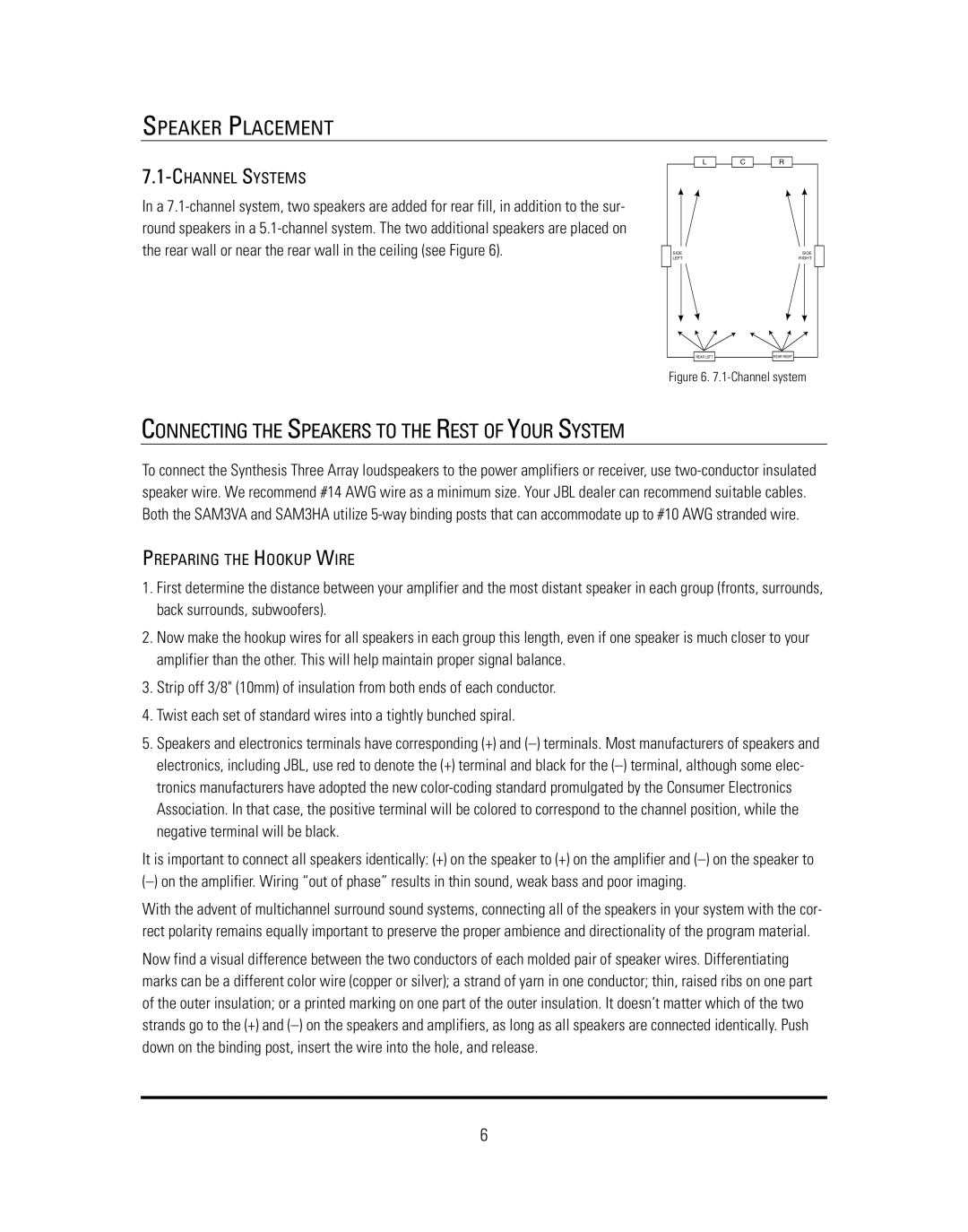SAM3HA, SAM3VA specifications
The JBL SAM3VA and SAM3HA are dynamic audio systems that combine advanced technology and exceptional sound quality for both professional and personal use. These models exemplify JBL's continued commitment to delivering premier acoustic performance and innovative design.One of the standout features of the SAM3VA and SAM3HA is their impressive sound fidelity. Both models are equipped with JBL's renowned driver technology, which produces clear highs, rich mids, and deep lows. This ensures that every note and beat is reproduced with precision, making them suitable for various audio applications, from live sound to studio monitoring.
The SAM3VA is particularly notable for its versatile connectivity options. It supports both wired and wireless connections, allowing users to seamlessly integrate it into their existing audio setups. The incorporation of Bluetooth technology means users can easily stream music from their mobile devices without the hassle of cables. Additionally, the SAM3VA boasts multiple inputs, making it compatible with various audio sources, such as mixers, instruments, and playback devices.
On the other hand, the SAM3HA focuses on high-performance acoustic features. It includes proprietary technologies such as Waveguide and high-frequency drivers designed to deliver a wide listening area and even sound dispersion. This makes the SAM3HA an excellent choice for professional environments where audio clarity and reach are essential, such as concert venues or large events.
Both models are built with durability and user-friendliness in mind. The robust construction of the cabinets ensures they can withstand the rigors of daily use, whether in a studio or on the road. The intuitive controls allow users to adjust settings quickly, making it easy to adapt to any performance scenario or personal preference.
In summary, the JBL SAM3VA and SAM3HA embody cutting-edge audio technology and craftsmanship. With their comprehensive features, including flexible connectivity, high-quality sound reproduction, and durable build, these systems cater to a wide range of audio enthusiasts and professionals alike. Whether for music production, live performances, or casual listening, these JBL models promise to deliver an unparalleled audio experience.

